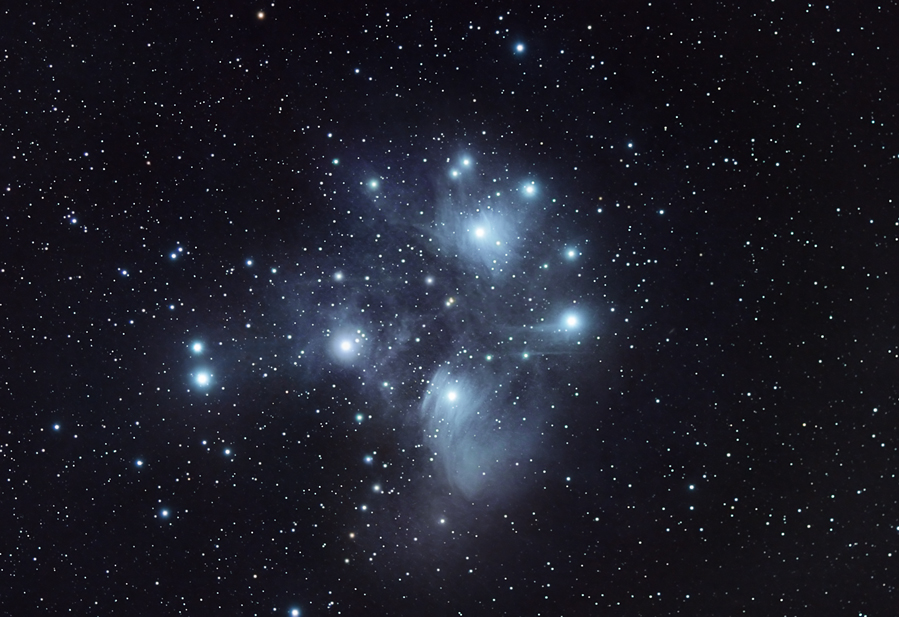Time Travel Research Center © 2005 Cetin BAL - GSM:+90 05366063183 - Turkey / Denizli
The Pleiades (M45)
Characteristics:
Magnitude: 1.6
Distance: 380 light years
RA: 3h 46m 31s
Dec: 23 degrees 57' 36"
Description:
The Pleiades
(M45, the
"Seven Sisters")
convey a sense of stately, quiet winter beauty. This open star cluster has
been recognized since antiquity, with the oldest recorded observation being
approximately 1000 years BC. Within this cluster, it is possible to resolve
between 7-11 stars with the naked eye, depending upon seeing conditions (and
eyesight!). Through the telescope, the cluster is known to contain about
500 stars that are gravitationally bound to each other. The age of this
cluster is estimated to be about 65 million years old, meaning that it was "born"
around the time of the dinosaur extinction. The beauty of this cluster is
due to the impressive amount of blue nebulosity that surrounds many of the
stars, most notably
Merope (surrounded by the brightest reflection nebulae of this
group, NGC 1435). In contrast to emission nebulae, the blue color of this
nebula is due to reflected light from nearby young stars. During visual
observation, there is a hint of nebulosity in a small scope such as an 8"
SCT, although the full extent can only be observed in longer exposure photos
such as this one. Please
click here for a higher resolution image.
Photographic Details:
Date: November 22, 2003
Scope: Takahashi Sky 90 at f4.5 with field flattener/focal reducer,
piggybacked on LX90 (which is mounted on a Meade Superwedge).
Autoguider: STV with e-finder.
Camera: Canon 10D.
Filter: IDAS LPS.
Exposures: 12 x 5' at ISO 800.
Conditions: Temperature 35 degrees F; below average transparency; average
seeing; very dewy; calm.
Post-processing: Raw conversion, adaptive dark frame calibration, alignment,
min/max excluded averaging done in ImagesPlus; Levels, curves, and layer
mask adjustments in Photoshop. I was not satisfied with my initial
processing, since star coloration was washed out in the process of curves
adjustment. I reprocessed this on 12/21/03 using a mask to protect the
stars from bloating and color loss, resulting in a more pleasing image (also
check high resolution link).
